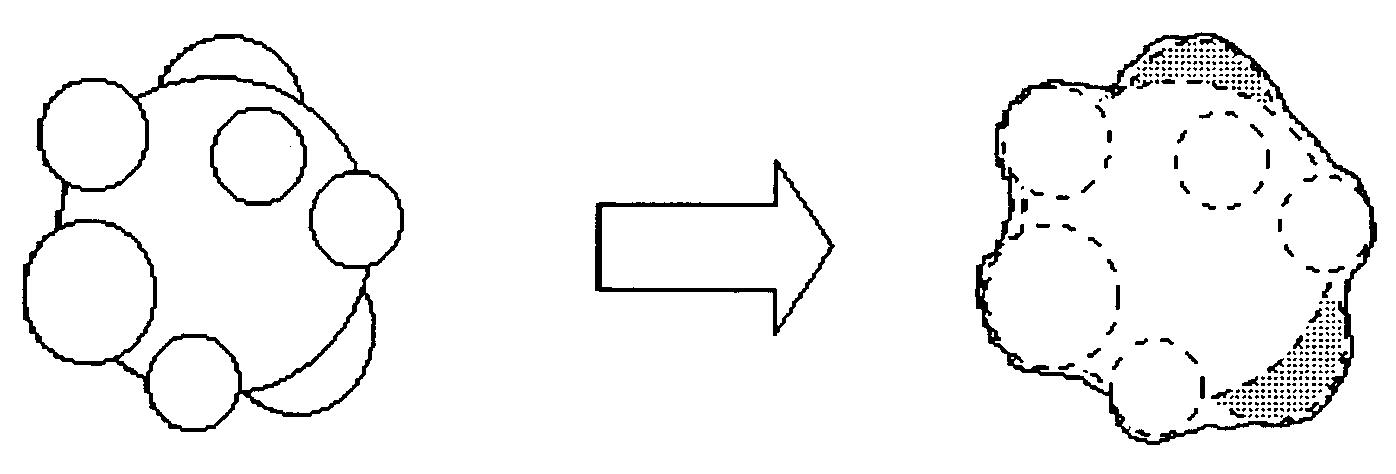Toner and method for producing the same, and image-forming method using the same
a technology of toner and method, applied in the field of toner, can solve the problems of uneven static charge ability, occurrence of fogging, and large particle size distribution of toner obtained by kneading-pulverizing method
- Summary
- Abstract
- Description
- Claims
- Application Information
AI Technical Summary
Benefits of technology
Problems solved by technology
Method used
Image
Examples
production example 1
-Preparation of Oil Phase-
[0403] The oil phase of Production Example 1 was prepared in a manner described below.
--Preparation of Unmodified (Lower Molecular Mass) Polyester--
[0404] Into a reactor equipped with a condenser, a stirrer, and a nitrogen gas feed tube were poured 229 parts of ethylene oxide (2 mole) adduct of bisphenol A, 529 parts of propylene oxide (3 mole) adduct of bisphenol A, 208 parts of terephthalic acid, 46 parts of adipic acid, and 2 parts of dibutyltin oxide. The mixture was reacted at 230° C. at normal atmospheric pressure for 8 hours and was further reacted at a reduced pressure of 10 mmHg to 15 mmHg for 5 hours. Thereafter, the reaction mixture was further reacted with 44 parts of trimellitic anhydride at 180° C. at normal atmospheric pressure for 2 hours, thereby yielded unmodified polyester. The unmodified polyester had a number-average molecular mass (Mn) of 2,600, a mass-average molecular mass (Mw) of 5,800, a glass transition temperature (Tg) of 45...
production examples 2-4
-Preparation of Oil Phase-
[0417] The oil phases of Production Examples 2-4 were prepared by the same manner as in Production Example 1, provided that the carbon black and resin in the master batch was replaced with a pigment and a resin indicated in Table 1 and the solid content of the material solution was changed to a solid content indicated in Table 1. The thus obtained oil phases were subjected to the measurement of Casson yield value and viscosity in the same matter as in Production Example 1. The results were shown in Table 1.
production example 5
-Preparation of Oil Phase-
[0418] The oil phase of Production Example 5 was prepared by the same manner as in Production Example 2, provided that the usage amount of the master batch was changed to 25,000 by parts, the solid content of the material solution was changed to 75%. The thus obtained oil phase was subjected to the measurement of Casson yield value and viscosity in the same matter as in Production Example 1. The results were shown in Table 1.
TABLE 1Oil PhaseProduct 1Product 2Product 3Product 4Product 5PigmentPB-k7PY155PR269PB15:3(PY155)(manufacturer)(Degussa)(Clariant)(Dai-Nippon)(Dainichiseika)(Clariant)ResinpolyesterpolyesterpolyesterpolyesterpolyesterSolid Content50 53 55 40 75(% by mass)Casson yield (Pa)10.525.319.90.9240Structuralthixotropythixotropythixotropythixotropythixotropyviscosity
[0419] The examples of the present invention are illustrated in details hereinafter, but it not intended to limit the present invention thereto. Note that all parts and % desc...
PUM
 Login to View More
Login to View More Abstract
Description
Claims
Application Information
 Login to View More
Login to View More - R&D
- Intellectual Property
- Life Sciences
- Materials
- Tech Scout
- Unparalleled Data Quality
- Higher Quality Content
- 60% Fewer Hallucinations
Browse by: Latest US Patents, China's latest patents, Technical Efficacy Thesaurus, Application Domain, Technology Topic, Popular Technical Reports.
© 2025 PatSnap. All rights reserved.Legal|Privacy policy|Modern Slavery Act Transparency Statement|Sitemap|About US| Contact US: help@patsnap.com



